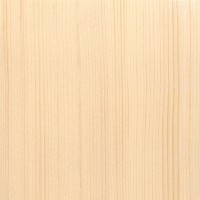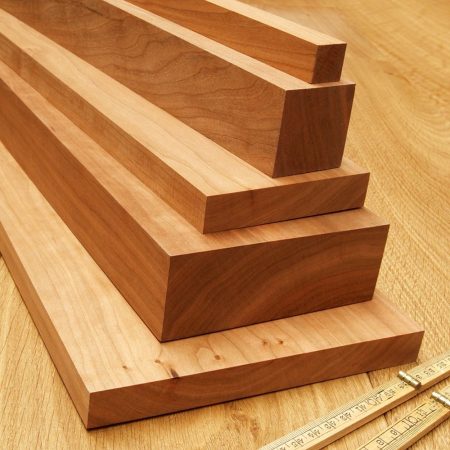Walnut, Black

This sub-species of Walnut features a heartwood that can range from a lighter pale brown to a dark chocolate brown with darker brown streaks. Color can sometimes have a grey, purple, or reddish cast. Sapwood is pale yellow-gray to nearly white. Figured grain patterns such as curl, crotch, and burl are also seen.
Spruce, Sitka

This wood’s color ranges from cream/white to yellow; heartwood can also exhibit a subtle pinkish-red hue in some instances. Its sapwood is not clearly demarcated from heartwood. Sitka Spruce has a fine, even texture, and a consistently straight grain. Some pieces can exhibit a special grain pattern called Bearclaw—vaguely resembling the scratches of a bear’s […]
Poplar, Yellow

This sub-species of Poplar has a heartwood that is light cream to yellowish brown, with occasional streaks of gray or green. Its sapwood is pale yellow to white, not always clearly demarcated from the heartwood. Many furnituremakers favor Poplar as a secondary wood in their pieces.
Pine, Southern Yellow

This sub-species of Pine is also known as Longleaf Pine. It features a heartwood that is reddish brown, sapwood is yellowish white, with a straight grain that has a fine to medium texture. Longleaf Pine is favored by cabinetmakers when producing a Pine-based piece that will not be painted or stained.
Maple, Soft

Not a distinct species of Maple on its own, Soft Maple is a commercial term meant to differentiate the wood of some types of maple from Hard Maple. Soft Maple is creamy white and less lustrous than Hard Maple. It is soft relative to Hard Maple but is still nearly as hard as Cherry. It […]
Maple, Hard

Unlike most other hardwoods, the sapwood of hard maple lumber is most commonly used rather than its heartwood. Sapwood color ranges from nearly white, to an off-white cream color, sometimes with a reddish or golden hue. The heartwood tends to be a darker reddish brown. Its grain is generally straight but may be wavy and can have […]
Hickory

The Carya genus (or what is more commonly referred to as Hickory) is divided into two main groupings: true-hickory, and pecan-hickory. Species in the true-hickory group tend to be slightly denser, and therefore a bit harder and stronger than the species in the pecan-hickory group. The most common Hickory sub-species sold in the US is […]
Fir, Douglas

Douglas Fir can vary in color based on the age and location of the tree. Usually a light brown color with a hint of red and/or yellow, with darker growth rings. In quartersawn pieces, the grain is typically straight and plain. In flatsawn pieces, (typically seen in rotary-sliced veneers), the wood can exhibit wild grain patterns.




